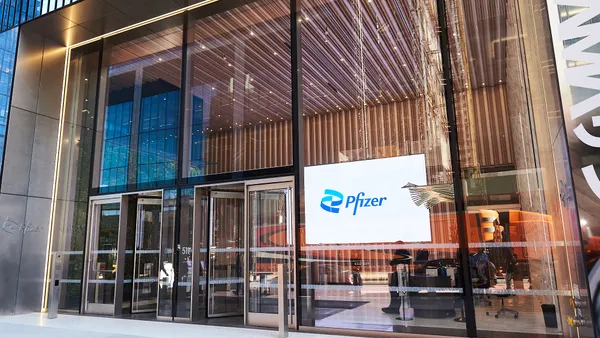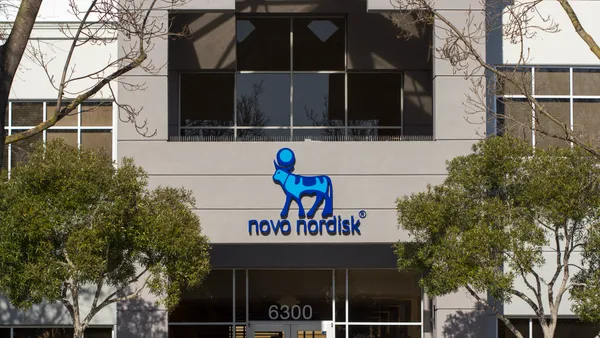32 Sep t e mb e r 20 07 VIEW on Marketing PATIENT COMPLIANCE I spent two days in Mexico City last October. With a population of more than 20 million, Greater Mexico City is immense, and flying over it takes one’s breath away. It was my first visit, and much was unfamiliar : the language, the money, the customs, the weather. It was confusing, certainly, but thanks to my hosts, who provided guidance and suggestions along the way, all went smoothly.When I said good bye less than 48 hours later, I had a different perspective. As I flew home that night, it occurred to me that patients who begin a pharmaceutical treatment program also experience a changing perspective over the course of their “journey,” and also benefit immensely from well� informed guidance and information. Whether it’s the heightened fears of the newly diagnosed at the begin� ning, concerns about side effects in the middle, or disappointment in a (real or perceived) poor treatment outcome at the end of treatment, the jour� ney is fraught with perils, all of which threaten to prevent patient compli� ance with a given prescription. Just as two people can have dramatically different experiences visiting the same country, two people with an identical condition may go to the same doctor and get the same medication, and yet six months later, it’s like� ly that only one will still be in compliance. Indeed, with 50% of patients dis� continuing drug therapy entirely by month six, it’s clear that something isn’t working properly. Addressing the Issue of Compliance Fixing the compliance problem is really a matter of prevention, com� prised of three main components: Early Patient Contact Once the patient leaves the doctor’s office the clock is ticking. Clearly, preventing noncompliance is much more manageable than trying to reverse the problem after the fact. Effective programs reach out to patients quickly. Frequent Patient Contact Every day represents a new opportunity for a given patient to fall off treatment. One time, one way information transfer is not enough. Effective programs are interactive, and remain in contact with the patient over the duration of the treatment regimen. Automated Feedback to the Physician Programs that give physicians insights into patient understanding and compliance — particularly if done on an individual patient basis — allow the doctor to monitor his or her effectiveness in keeping the patient on treatment. A correct diagnosis and prescription is of no use if treatment is not followed, and doctors need an automated feedback loop that lets them know whether what they’ve recommended is working. Focus on the Personal Just as the best travel experiences include that personal touch, it’s important to focus on compliance from an individual patient perspective, rather than in the aggregate.Traditionally, these individual results have been measured after the fact, with patients being asked, “Did you take your medicine as instructed?”This is much like asking “Did you enjoy your stay?” This query doesn’t actually help you enjoy your stay, just as “Did you take your medicine?” is inherently retrospective and of no value to the patient in question. It is much more beneficial to engage the patient in a conversa� tion at baseline — before any treatment has begun. This approach com� prises some key steps: . Use a few key, highly predictive questions focused on how the patient has behaved in prior treatment situations to get a measure of how well a given patient will comply with a treatment regimen. . Based on the answers to these questions, classify each patient into one of three levels of risk: high, medium, and low. . Provide compliance assistance programs, based on each patient’s risk level. For example, those who are low risk receive information that sup� ports their good, past behavior. As patients move up the risk scale, give more attention, and gently, but firmly, include information regarding the consequences of noncompliance, for example morbidity and the impact on quality of life, and even provide specific snippets of support, such as “keep your pills next to your toothbrush” as a reminder. One�size�fits�nobody treatment programs are in danger of offering too little information to some, too much information to others, and the perfect amount of the wrong information to still others.The more the experience can be customized before the fact, the better the industry will be at help� ing patients stay compliant. The patient mindset — like that of a first�time visitor to a foreign coun� try — evolves over time, and it’s the sophisticated — and profitable — pharma company that’s aware of this reality and capitalizes on it. # InfoMedics Inc. INFOMEDICS INC.,Woburn, Mass., helps pharmaceutical companies and managed care organizations improve the quality of communications between patients and their physicians. For more information, visit infomedics.com. Compliance is a Journey Not an Event The patient mindset — like that of a first�time visitor to a foreign country — evolves over time, and it’s the sophisticated — and profitable — pharma company that’s aware of this reality and capitalizes on it. Gene Guselli, Cofounder, President, and CEO 0907 PVV Layout 9/7/07 5:56 PM Page 32 sho wmehowt oc onnec t .com orcallBobat877.972.9725
An article from


Compliance is a Journey Not an Event
Filed Under:
Commercialization








